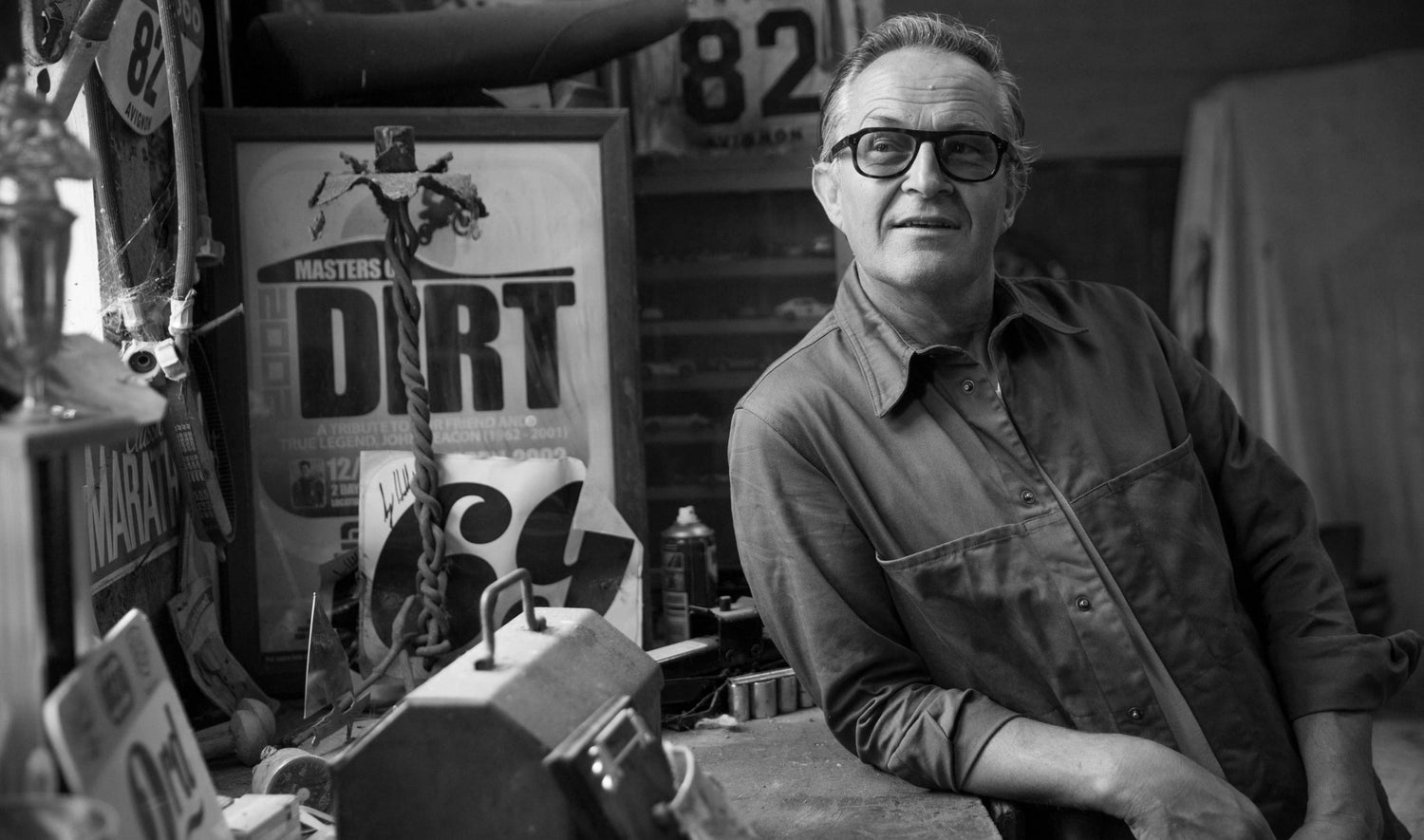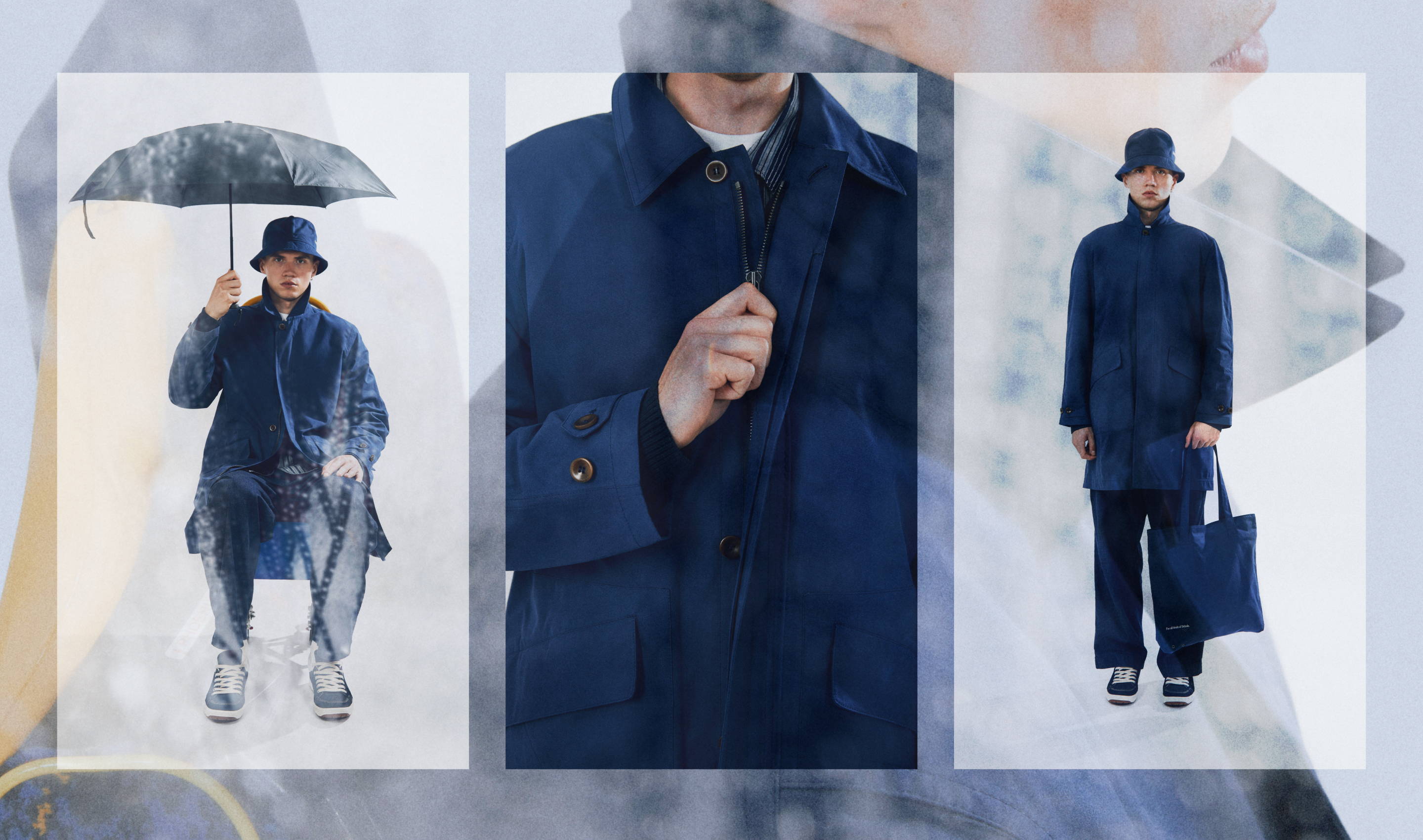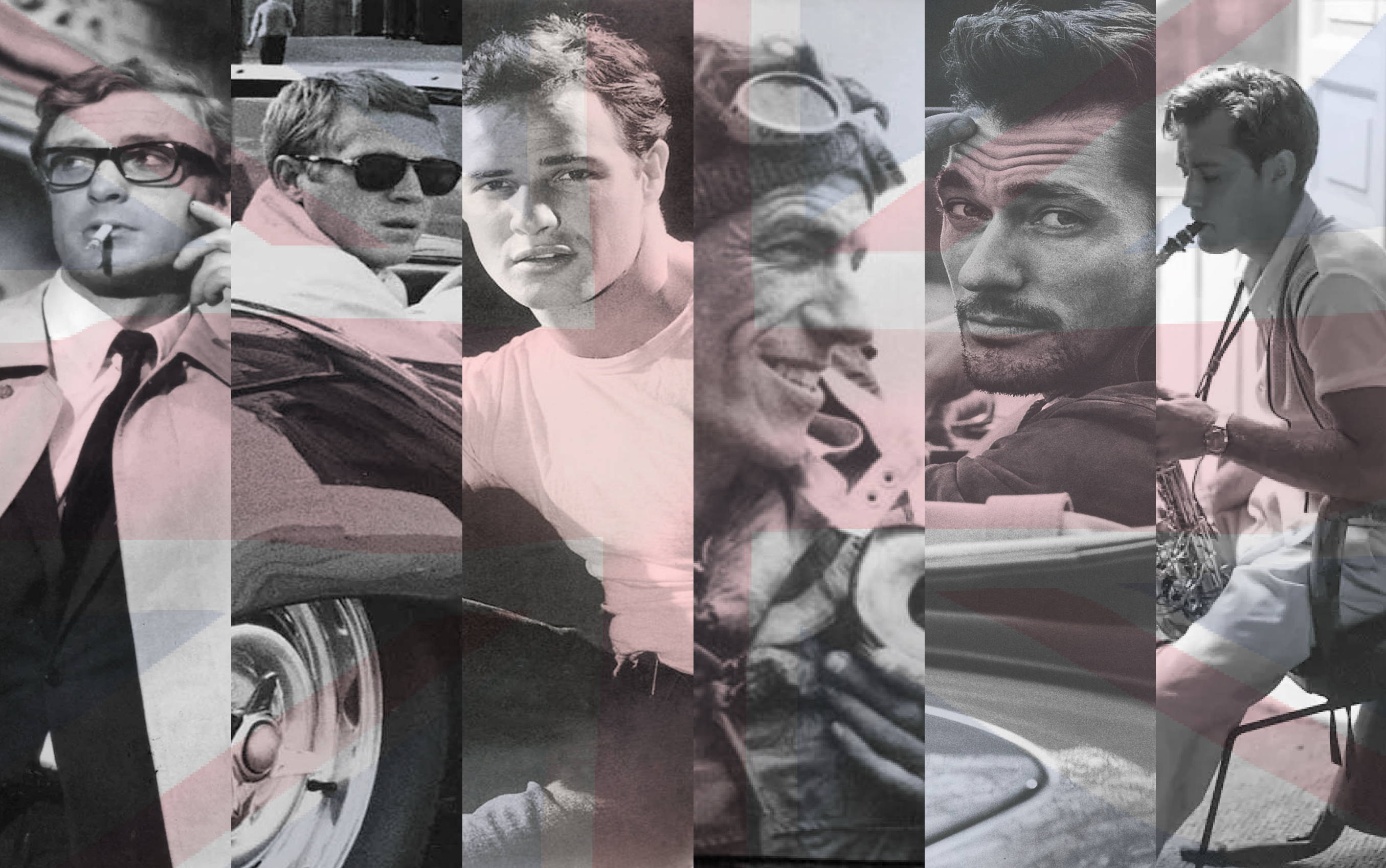As Told By People Watcher Nick Ashley
Time To Read: 5 Minutes
As Told By People Watcher Nick Ashley
Time to read: 5 minutes
Ten years ago this summer, we introduced the word shacket into the Private White V.C. lexicon, with the help from people watcher (and co-founder) Nick Ashley’s expert eye. He noticed a requirement for adding such a versatile garment into every modern man’s wardrobe long before the likes of casual, relaxed, dressed-down style became the norm.
And so, fast forward to today, it seemed fitting to celebrate our latest design launch and chat with the man himself. We had the pleasure of catching up inbetween Nick’s eclectic, busy schedule of lambing at his farm in Wales and filming in LA, to discuss motorbike adventures (naturally) alongside the evolution of shackets here at PWVC.
Nick, thanks for chatting with us. How have you been keeping yourself busy since we last caught up for The Classic Twin Track launch last August?
I’m working on a couple of secret projects, one of them is TV presenting, I’m going off to film that next week and the other one is a design project I’m doing with my daughter Lily. That’s all I’ll reveal on those, but I’ve been keeping myself busy. I do like to have a good work life balance, the second this call is over I’ll be preparing myself for the next adventure which involves a month in Mexico and America to do the Baja rally. It’s a lot of fun, I’m not there yet because they’ve got problems with getting pilots for the aircrafts so I’m not out of the woods yet but watch this space.
Can you tell us about your involvement with shackets at Private White V.C.?
I’m a people watcher, my job is to watch how people evolve and how clothes need to develop to keep up with the changes. I am obsessed with the art of removing all stuffiness from British clothing. In summer especially, Brits really struggle with the concept of wearing lighter clothing for the warmer weather: Italians and other better acclimatised nations have nailed it forever, so I thought it was about time that we took a lead from our more formative friends and make ourselves a lot more comfortable by introducing the shacket back in 2012.
It came about at PWVC years ago because we were doing work jackets and we were doing shirts, both of these things you can wear with jeans and a t-shirt and then you can also put something on top of them that’s a bit more formal. If you’ve got a few lumps and bumps it covers them up (for boys and girls) and so the work jacket was seen to be for some people a little bit too ‘worky,’ like are you being served formally at dinner. And then a shirt it’s difficult, do you tuck it in and look like Clarkson or do you keep it out and look like Richard Hammond, it’s very hard to get a shirt right.
A shirt is the ultimate piece of kit probably better suited if you’re wearing a jacket over it. I’ve found in my experience it’s difficult to wear a shirt just by itself. Hence the introduction of the shacket, which is a mixture of the shirt and jacket. Explaining that concept and developing the first generation of designs took a while, I was simply updating what the world was wearing.
The reason for the shacket to exist is it’s ideal to wear with jeans and a t-shirt but it can be put into quite formal fabrics as well. It’s a fantastic vehicle for quite exotic materials because it doesn’t have to be made in basic cotton drill, it can be made in an array of beautiful cloths like Ventile® and hard-wearing merino wool flannel.
It can also be made in all kinds of nice, brushed cottons and fabrics you would make in heavy shirting. In terms of a vehicle for carrying fabrics and cloths it really is ideal. The design has got a lot of pockets for all your technology – it's all safe in there. You don’t have to have trousers with bulging pockets or shirts with phones falling out of your top pocket, everything is all neatly in there. Plus, it works for the summer and it works for the winter. I like to work in a kind of evolutionary way, so I like to look behind before I go forwards. I like to take quite iconic styles and then update them a little bit which is what we did with the shacket. It’s a really versatile piece of kit which has evolved over the years into an extremely well-designed, functional garment.
How would you style yours?
That’s an interesting question, I like to keep things minimal to be authentic but it all depends on the cloth.
I’m using the word fabric for anything that’s cotton or a machine washable wool that can be used and abused and thrown in a washing machine.
I live on a farm and on motorbikes, so I really crap the hell out of my gear. I do wear a shacket, I’m wearing one right now actually. It’s a padded one that’s got a polyester fleece on the outside. Because we’re lambing at the moment, if it gets too much dirt on it, it just goes in the washing machine. I’m flat out with lambing, we often get the odd lamb in and have to keep it by the argar, it’s quite classic British stuff.
I use a Private White one in the summer as I can throw it in the washing machine on a low temperature.
I do think that good design is invisible. So if something is truly classic, a man looks appropriately dressed, and looks fantastic, but you don’t really know why.
Ten years ago this summer, we introduced the word shacket into the Private White V.C. lexicon, with the help from people watcher (and co-founder) Nick Ashley’s expert eye. He noticed a requirement for adding such a versatile garment into every modern man’s wardrobe long before the likes of casual, relaxed, dressed-down style became the norm.
And so, fast forward to today, it seemed fitting to celebrate our latest design launch and chat with the man himself. We had the pleasure of catching up inbetween Nick’s eclectic, busy schedule of lambing at his farm in Wales and filming in LA, to discuss motorbike adventures (naturally) alongside the evolution of shackets here at PWVC.
Nick, thanks for chatting with us. How have you been keeping yourself busy since we last caught up for The Classic Twin Track launch last August?
I’m working on a couple of secret projects, one of them is TV presenting, I’m going off to film that next week and the other one is a design project I’m doing with my daughter Lily. That’s all I’ll reveal on those, but I’ve been keeping myself busy. I do like to have a good work life balance, the second this call is over I’ll be preparing myself for the next adventure which involves a month in Mexico and America to do the Baja rally. It’s a lot of fun, I’m not there yet because they’ve got problems with getting pilots for the aircrafts so I’m not out of the woods yet but watch this space.
Can you tell us about your involvement with shackets at Private White V.C.?
I’m a people watcher, my job is to watch how people evolve and how clothes need to develop to keep up with the changes. I am obsessed with the art of removing all stuffiness from British clothing. In summer especially, Brits really struggle with the concept of wearing lighter clothing for the warmer weather: Italians and other better acclimatised nations have nailed it forever, so I thought it was about time that we took a lead from our more formative friends and make ourselves a lot more comfortable by introducing the shacket back in 2012.
It came about at PWVC years ago because we were doing work jackets and we were doing shirts, both of these things you can wear with jeans and a t-shirt and then you can also put something on top of them that’s a bit more formal. If you’ve got a few lumps and bumps it covers them up (for boys and girls) and so the work jacket was seen to be for some people a little bit too ‘worky,’ like are you being served formally at dinner. And then a shirt it’s difficult, do you tuck it in and look like Clarkson or do you keep it out and look like Richard Hammond, it’s very hard to get a shirt right.
A shirt is the ultimate piece of kit probably better suited if you’re wearing a jacket over it. I’ve found in my experience it’s difficult to wear a shirt just by itself. Hence the introduction of the shacket, which is a mixture of the shirt and jacket. Explaining that concept and developing the first generation of designs took a while, I was simply updating what the world was wearing.
The reason for the shacket to exist is it’s ideal to wear with jeans and a t-shirt but it can be put into quite formal fabrics as well. It’s a fantastic vehicle for quite exotic materials because it doesn’t have to be made in basic cotton drill, it can be made in an array of beautiful cloths like Ventile® and hard-wearing merino wool flannel.
It can also be made in all kinds of nice, brushed cottons and fabrics you would make in heavy shirting. In terms of a vehicle for carrying fabrics and cloths it really is ideal. The design has got a lot of pockets for all your technology – it's all safe in there. You don’t have to have trousers with bulging pockets or shirts with phones falling out of your top pocket, everything is all neatly in there. Plus, it works for the summer and it works for the winter. I like to work in a kind of evolutionary way, so I like to look behind before I go forwards. I like to take quite iconic styles and then update them a little bit which is what we did with the shacket. It’s a really versatile piece of kit which has evolved over the years into an extremely well-designed, functional garment.
How would you style yours?
That’s an interesting question, I like to keep things minimal to be authentic but it all depends on the cloth.
I’m using the word fabric for anything that’s cotton or a machine washable wool that can be used and abused and thrown in a washing machine.
I live on a farm and on motorbikes, so I really crap the hell out of my gear. I do wear a shacket, I’m wearing one right now actually. It’s a padded one that’s got a polyester fleece on the outside. Because we’re lambing at the moment, if it gets too much dirt on it, it just goes in the washing machine. I’m flat out with lambing, we often get the odd lamb in and have to keep it by the argar, it’s quite classic British stuff.
I use a Private White one in the summer as I can throw it in the washing machine on a low temperature.
I do think that good design is invisible. So if something is truly classic, a man looks appropriately dressed, and looks fantastic, but you don’t really know why.
NICK RECOMMENDS
Cars: Jaguar D-Type
“I first came across one of these when I was offered a drive in the very first Festival of Speed at Goodwood. During practice I fell in love with the way that I steered her with the throttle, just like a motorbike!”
Cooking: Le Cruiset Stonewear
“A heavy bottomed, solidly made stone wear cooking dish. I do a lot on an agar and a campfire and love one pot slow cooking in a heavy bottomed pot, especially a leg of lamb mixed with some herbs where you leave it all day - I really like that.”
THE NICK ASHLEY EDIT
NICK RECOMMENDS
Cars: Jaguar D-Type
“I first came across one of these when I was offered a drive in the very first Festival of Speed at Goodwood. During practice I fell in love with the way that I steered her with the throttle, just like a motorbike!”
Cooking: Le Cruiset Stonewear
“A heavy bottomed, solidly made stone wear cooking dish. I do a lot on an agar or campfire and love one pot slow cooking in a heavy bottomed pot, especially a leg of lamb mixed with some herbs where you leave it all day - I really like that.”






Leave a comment
This site is protected by hCaptcha and the hCaptcha Privacy Policy and Terms of Service apply.